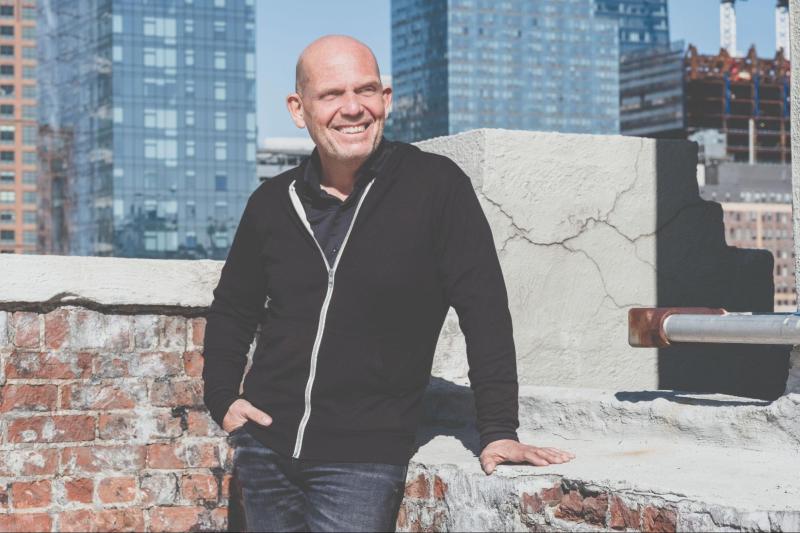When Beethoven knocks on the door, you answer.
New York Philharmonic director Jaap van Zweden answered the call at the San Francisco Symphony (SFS) performance on Saturday. The concert was the final showing in a three-night run featuring the fifth symphonies of Ludwig van Beethoven and Dmitri Shostakovich.
The music of these composers is often associated with pain, but these two symphonies — the most recognizable from each of the composers’ work — brim with life, drama and triumph. Beethoven’s, often nicknamed “Fate,” boasts four movements at the pinnacles of their respective forms. Shostakovich’s is a masterclass in pacing, with an energetic trajectory that sends your soul into the stratosphere. In short, the program was loaded.
Though I was slightly disappointed with the Beethoven performance, the piece is simply irresistible; I imagine most were in attendance just to hear the concert’s opening 10 seconds. Still, SFS surprised me with their rendition of the Shostakovich, which seemed to be the clear audience favorite by the end of the night.
Here, I give roughly five praises and critiques of the performance, in a particular order.
Five down: Beethoven Symphony No. 5
First, some context: I really enjoyed the SFS performance of this work. Sections hit their marks and soloists carried their lines. The piece’s heroism and histrionics were on marvelous display, with textural and dynamic shifts executed well.
But as someone who once aspired to become a music educator, I inevitably have many notes. For one, I thought the tempo of the outer movements was rushed. The issue culminated in the fourth movement’s coda, where a particularly tricky accelerando (speeding up) passage fell slightly flat since the tempo was too fast when it began.
Similarly, the piece felt like it missed some opportunities for rubato (time taking). Van Zweden is not an old musician, yet it seems that he adopts a conservative approach by sticking to a more rigid tempo. Though it’s true that indulgence isn’t always best, I would have enjoyed a little more interpretive freedom. (Even when van Zweden did flex time in the fourth movement’s opening theme, I found that it only reduced the theme’s natural majesty.)
Most egregious for me, however, was the string sections’ lack of coordination in the first movement. Any performance of these seven minutes requires a steady leading hand, a capable concertmaster and hours of rehearsal to stay together in time. The theme is deceptively simple but difficult to execute; though SFS had it mostly down, some moments felt awkward.
Many of these are purely subjective interpretive disagreements. Truthfully, I spent most of the piece — especially the exceptional inner movements — reveling in the purity of the oboe, clarinet and flute. Plus, my favorite sections of the ensemble — the brass and the basses — expressed themselves fully in the balance, soaring over and under the orchestra like diving birds.
Five up: Shostakovich Symphony No. 5
When Shostakovich comes knocking, it’s probably best to leave the door closed — unless you want the KGB in your home.
The SFS played this piece flawlessly, to my ear. The apprehensions and nits that had built in my head from the first half were gone immediately: Every moment of the work was matched by raw talent and emotion.
Van Zweden demonstrated why he rose to the top of the musical world. Many orchestras like to ignore guest conductors in favor of the music, but van Zweden commands attention and precision at the podium. He has a unique push and pull with the orchestra, egging them on for more vibrato or wider sound and reacting physically to the group’s response. I had immense fun just watching his legs: seeing the way the music moves him and vice versa. Hector Berlioz said the orchestra is an instrument; van Zweden is a virtuoso.
One also gets the sense that van Zweden knows every bar of these pieces. He cues in the first violins without looking in one bar, then mimics a perfect harp glissando in the next. Familiarity may breed contempt, but all I sensed from van Zweden on Saturday was love and joy.
The third movement epitomized this love, showcasing one of the most expressive string passages in all of Western music. The finale of this movement, which moves attacca (without pause) into the fourth, was easily the highlight of the whole concert.
To cap it off, the last movement glorified the SF Symphony’s illustrious brass, with guest horn Brett Hodge, trumpet Aaron Schuman and trombone Timothy Higgins taking center stage. I will never understand how these three managed to balance against the entire string section with such heavenly tone, but I hope to see them again very soon.
I believe no lover of the arts left Davies on Saturday unsatisfied. Concerts like this are few and far between, and we are lucky to live in a world where collaborations of this caliber lie just beyond our doorstep. When van Zweden relinquishes his position in New York in 2026, I hope his schedule clears enough to make more regular appearances in San Francisco.
Editor’s Note: This article is a review and includes subjective thoughts, opinions and critiques.
Editor’s Note: A previous version of this article mistakenly attributed Saturday’s performance to horn Jesse Clevenger and trumpet Mark Inouye. The Daily regrets this error.
